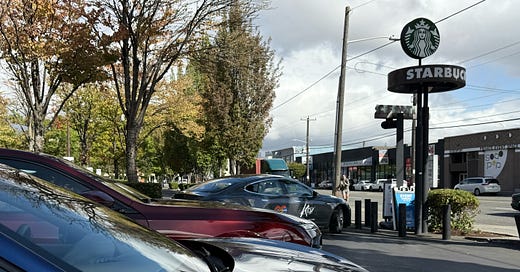A few weeks ago, I joined a unique cross-country race: 10 cars driving from Seattle to Boston, including nine electric vehicles and one gas car. The most telling participant? A 2013 Tesla Model S that showed just how far electric vehicles have come in a decade — and how outdated most people’s perceptions of EVs remain.
The Competitors:
2013 Tesla Model S 85
Genesis G80 Electric
BMW i7 eDrive50
Porsche Taycan
Mercedes-Benz EQS 450+
Hyundai Ioniq 6
Tesla Model 3 LR RWD
Tesla Model S Plaid
Lucid Air Grand Touring
Acura TLX Type S (The gas comparison)
Here’s the thing about electric cars: Most people’s understanding of them is stuck in 2013 with that old Model S. While that vintage Tesla needed more than 30 lengthy charging stops to get across the country, modern EVs tell a different story. Most completed the journey with just 15-16 stops across some 48 hours of travel time, each typically lasting 15-20 minutes — barely enough time to grab coffee and use the restroom.
The results challenged conventional wisdom about electric vehicles. The Tesla Model 3, the most affordable EV in our group at less than $40,000, finished second among the electric entries while besting competitors costing two or three times as much. While the new Porsche Taycan easily beat the rest of the electrics thanks to its astonishing charging capabilities, it was still only a few hours ahead after a 3,000-mile journey despite being the most expensive.
The gas-powered car, an Acura TLX, did win overall, but even that comes with a caveat: Its team spent the first half of the trip taking it easy until they realized how quickly the Porsche was moving. Only then did they get serious about maintaining their lead.
Different cars took different approaches to the challenge. I might be a little biased because I was on Team Mercedes, but the EQS seems to have been designed with “normal” drivers in mind rather than range-optimizing nerds like us, maintaining largely consistent charging speeds regardless of battery level. Other cars have much more significant “charging curves” where charging slows dramatically as the battery fills up. It’s the difference between a car designed by engineers seeking maximum performance and one designed for how people actually drive.
What made the journey particularly fascinating was how the cars naturally grouped together despite different charging strategies and capabilities. Even over thousands of miles, we kept running into each other at charging stations, creating an impromptu social atmosphere that made the long journey more enjoyable and more competitive.
The charging infrastructure along America’s longest interstate proved remarkably robust. Tesla’s Supercharger network was the clear standout — while other networks like Electrify America are technically capable of faster charging for certain vehicles (like the Lucid, Porsche and Hyundai), Tesla’s chargers are more plentiful and more reliable. It’s no wonder most automakers are in the process of adopting Tesla’s charging standard, with Tesla planning charger upgrades to support even faster speeds.
Tesla’s Superchargers were also consistently located right off the highway with good amenities nearby, while other networks often required short detours to places like Walmart parking lots. In more than 3,000 miles, none of us encountered a completely failed or blocked charger — a milestone that would have been unthinkable just a few years (or months!) ago.
And modern navigation systems have made long-distance EV travel nearly foolproof. While most cars have smart systems for planning charging stops, the Tesla and Mercedes stood out by requiring virtually no thought beyond following the nav’s instructions about where to stop and how long to charge.
Range anxiety? That turned out to be a nonissue. Our EVs could easily travel 200 miles between charges, and while that’s less than many gas cars, it aligns well with how people actually road trip — and with 15-minute charge stops, the car will likely be ready before you are. Most drivers — especially those traveling with families — prefer to stop every few hours anyway.
The longest theoretical range doesn’t win races, either; smart charging strategies and convenient charger locations do. The Lucid had the longest range by far, but the uber-fast charging of the Porsche and the Model 3’s efficiency and Tesla Supercharger network were enough to best it.
What’s most striking is how normal it all felt. This real-world test proved that it really doesn’t matter which modern EV you buy, as long as it’s the latest generation and not an older or slower-charging model like a Chevy Bolt EV or Ford Mustang Mach-E. They all completed the journey successfully, though some certainly proved more capable than others.
Gas cars still hold advantages for cross-country travel, but the gap is surprisingly narrow, and for the kind of road trips most Americans actually take (not many folks are driving coast-to-coast!), modern EVs are more than capable.
The 2013 Tesla that joined our race was revolutionary for its time. But using it as a benchmark for modern EVs is like judging today’s smartphones by the original iPhone. The technology has evolved — it’s time for our perceptions to catch up.
The four episodes of “I-90 Surge” are below. Enjoy!








This is great. We are 10mins walk from I90 in Western Mass so you would have come right past us. The gas car may have won (just) but I would far rather have the features, comfort, and lower emissions of an EV. Never going back to dinosaur tech.